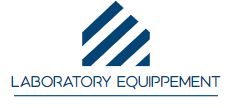HOW TO DETECT LOW ABUNDANCE PROTEINS IN A SAMPLE

The predominance of high abundance proteins in biological samples, often complicates the work to analyze and detect low abundance proteins known as LAPs (low abundance proteins). In the case of plasma, for example, 99% of its total protein content is made up of only 22 major proteins, while the remaining 1% corresponds to hundreds of proteins that are expressed in low amounts.
Standard methods can be used to detect low abundance proteins in a biological sample, but these require previous steps of optimization and signal amplification.
In this entry we summarize the main methods for detecting low abundance proteins in biological samples.
METHODS TO DETECT LOW ABUNDANCE PROTEINS
Before proceeding to the analysis of the low abundance proteins, it is necessary to carry out a process of enrichment of the sample by depleting the highly abundant proteins in it, thus increasing the specific signal of the low abundance proteins, facilitating their detection.
There are several methods to enrich these samples, including:
Collagenase treatment (can double the detection signal of low abundance proteins)
Isopropanol extraction with polyacrylamide gel electrophoresis
Polyethylene glycol separation and immunoaffinity-based depletion (this method uses IgY antibodies and can increase sensitivity up to 3 times)
Protamine sulfate precipitation combined with Western Blot (simple and low cost method to deplete abundant proteins)
Magnetic nanoparticles
Capture reagent-based immunodepletion methods
Immunoaffinity partition
Heparin chromatography (can increase detection signal by more than 20%)
Once the sample has been enriched, the detection method that will be used to detect low abundance proteins must be optimized:
MASS SPECTROMETRY
Signal augmentation mass spectrometry is one of the most widely used methods to detect low abundance proteins in various types of samples, especially in serum, adipose tissue, bone and tendons.
This analysis can be improved using affinity capture reagents against the protein of interest, since this allows to increase its concentration.
WESTERN BLOT
The properly optimized western blot is a very effective method to detect low abundance proteins. The optimization of this technique goes through:
Selection of the appropriate lysis buffer
Protein precipitation
Optimization of gel electrophoresis
Optimization of the concentration of the primary antibody
Optimization of signal detection
ELISA
Although standard ELISA assays are not sensitive enough to detect low abundance proteins, combining this technique with a proximity ligation assay (PLA), it is possible to significantly increase the specificity when detecting the protein of interest simultaneously by means of numerous probes.
This method has been used for the detection of biomarkers of neurodegenerative and inflammatory diseases.
NUCLEAR MAGNETIC RESONANCE
Another of the most effective methods to detect low abundance proteins is high resolution nuclear magnetic resonance, which offers high sensitivity and selectivity without the need for a previous isolation procedure.
This method has been used for the analysis of Alzheimer-related biomarkers such as the β-amyloid protein.
